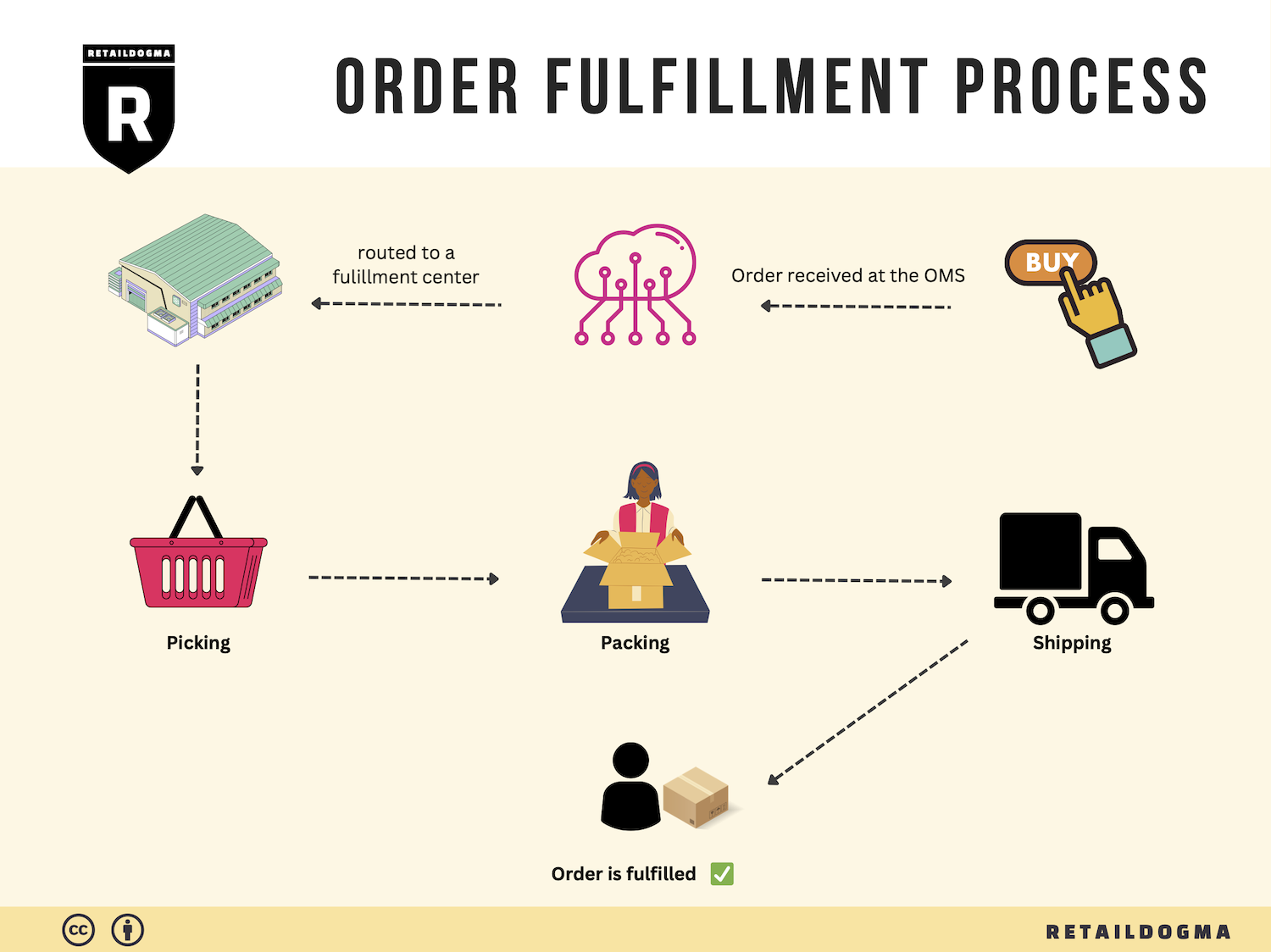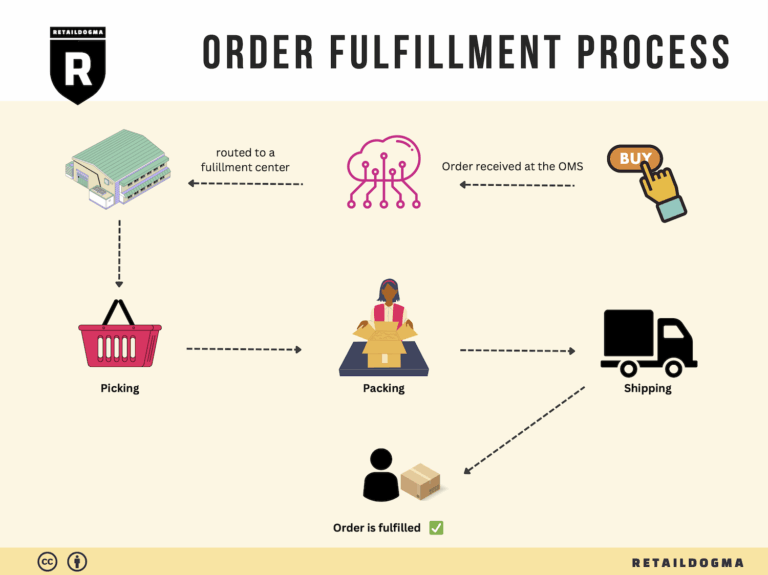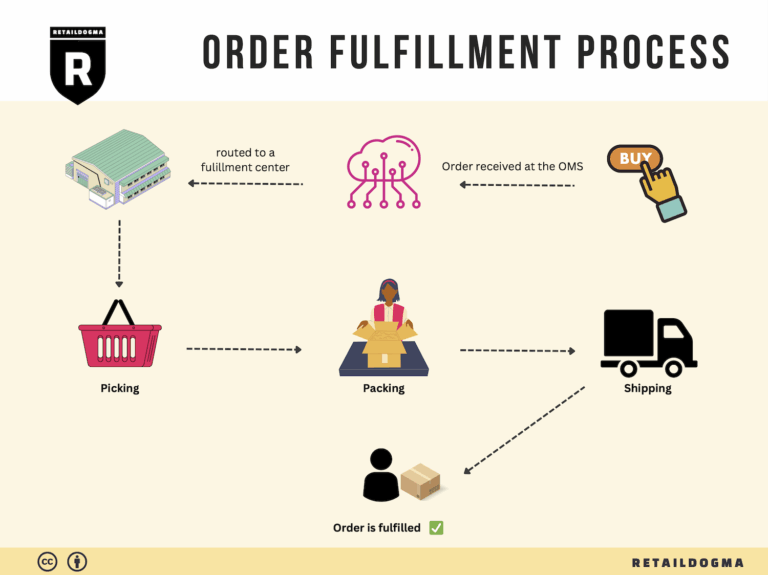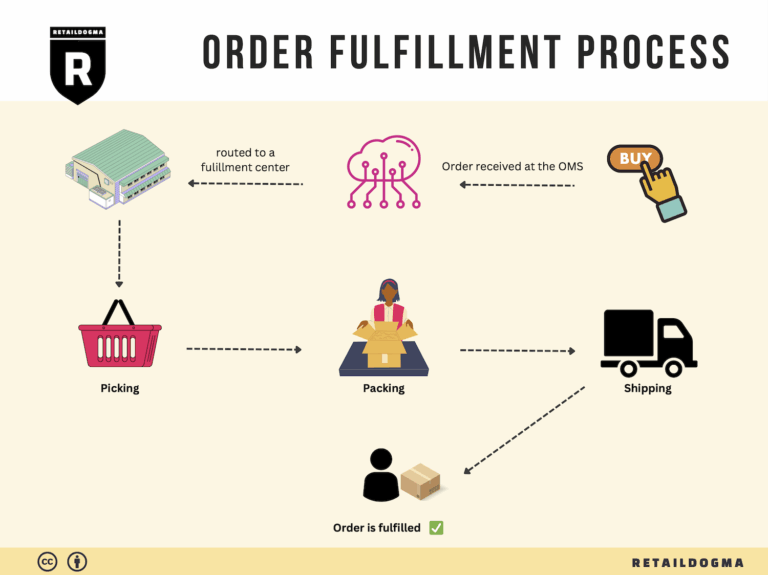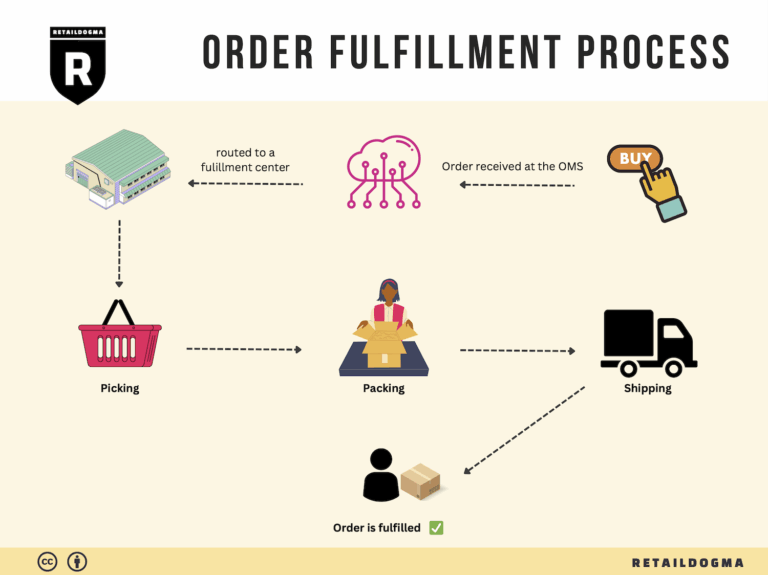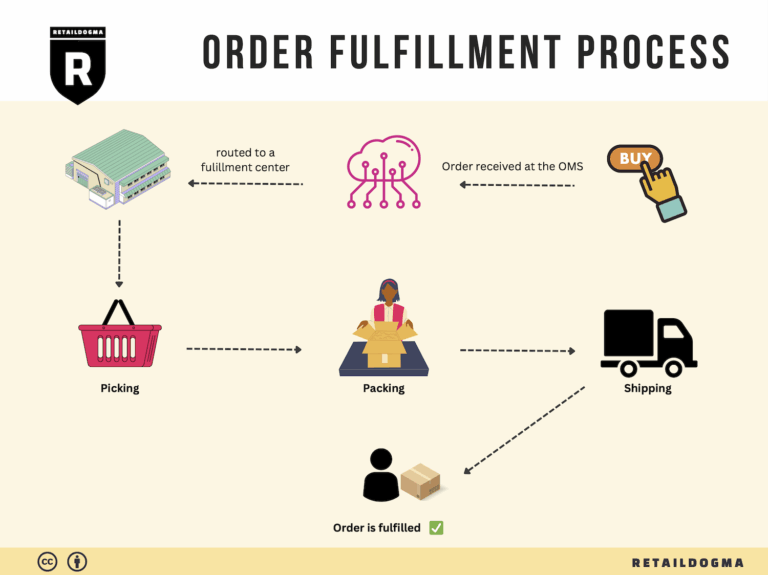How Order Fulfillment Works: A Step-by-Step Guide for Businesses
What is E-commerce Fulfillment? An Introduction for Growing Businesses
Understanding E-commerce Fulfillment
As an e-commerce business owner, you may find yourself grappling with the complexities of packing and shipping orders, especially as your sales begin to grow. This overwhelming aspect of operations can divert your attention from what truly matters: scaling your business and delivering exceptional customer experiences. The process of fulfillment—the act of getting a product from your warehouse to the customer’s doorstep—plays a crucial role in this journey.
E-commerce fulfillment encompasses a variety of tasks, including inventory management, order processing, picking and packing items, and shipping products. For many growing businesses, choosing the right fulfillment model is essential to ensure timely delivery while maintaining cost efficiency. Various models exist, such as Third-Party Logistics (3PL) and Fulfillment by Amazon (FBA), each offering unique advantages and tailored solutions to meet your specific needs.
This guide will delve into the different fulfillment models available to you, providing insights on how they function and which might be the best fit for your business. We will explore core services that fulfillment partners typically offer, such as storage, inventory management, order processing, and customer service. Understanding these services is vital for evaluating potential partners and determining the level of support you require as you scale.
Choosing the right fulfillment partner is a decision that can significantly impact your operational efficiency and customer satisfaction. This guide will outline key considerations to keep in mind when assessing potential logistics partners, including their location, technology capabilities, and service level agreements. Additionally, we will discuss pricing structures, helping you understand the cost implications of different fulfillment options and how to budget effectively.
Ultimately, the goal of this guide is to empower you to make informed decisions about your logistics strategy. By providing clarity on the various fulfillment models, core services, partner selection criteria, and pricing, we aim to equip you with the knowledge necessary to streamline your operations and enhance your customer experience. As you navigate the complexities of e-commerce fulfillment, remember that a well-structured logistics strategy can not only alleviate the burden of packing and shipping but also serve as a catalyst for your business’s growth.
What You’ll Learn In This Guide
- What is E-commerce Fulfillment? An Introduction for Growing Businesses
- The Order Fulfillment Process: From ‘Buy’ Button to Customer’s Door
- Comparing Fulfillment Models: In-House vs. 3PL vs. Dropshipping
- A Deep Dive into Amazon FBA: Pros, Cons, and Who It’s For
- Core Services Offered by Fulfillment Centers
- How to Choose a Fulfillment Partner: A 6-Point Checklist
- Understanding Fulfillment Pricing: A Breakdown of Common Fees
- Frequently Asked Questions (FAQs) about Fulfillment
- Conclusion: Is Outsourcing Fulfillment the Right Move for Your Business?
- Important Disclaimer
The Order Fulfillment Process: From ‘Buy’ Button to Customer’s Door
1. Receiving Inventory
The order fulfillment process begins with receiving inventory at the fulfillment center. This step is critical as it establishes the foundation for the entire supply chain operation. When products arrive at the Amazon Fulfillment Center in Las Vegas, they undergo a thorough inspection to ensure they match the purchase order specifications in terms of quantity, quality, and condition.
During this phase, inventory is assigned a Stock Keeping Unit (SKU), a unique identifier that facilitates tracking and management. The SKU helps streamline inventory management by enabling quick identification of products, which is essential for maintaining accurate stock levels and ensuring efficient order processing.
Properly receiving inventory is vital for minimizing discrepancies and ensuring that the fulfillment center has the right products available to meet customer demands. If this step is rushed or neglected, it can lead to stockouts or overstock situations, both of which can negatively impact customer satisfaction and operational efficiency.
2. Warehouse Storage
Once inventory is received and processed, it is strategically stored within the fulfillment center. This step involves organizing products in a way that optimizes space and enhances accessibility. The layout of the warehouse is designed to facilitate quick retrieval and efficient movement throughout the facility.
Products are often stored in bins, shelves, or pallets, depending on their size and type. Each storage location is labeled with a unique identifier, allowing for easy tracking and retrieval. Effective warehouse storage is crucial because it directly influences the speed at which orders can be processed. An organized storage system reduces the time employees spend searching for items, thereby increasing overall operational efficiency.
In this phase, the concept of “slotting” is often utilized, where items are placed in specific locations based on their demand frequency. High-demand products are stored closer to the packing area, allowing for faster access and contributing to quicker order fulfillment.
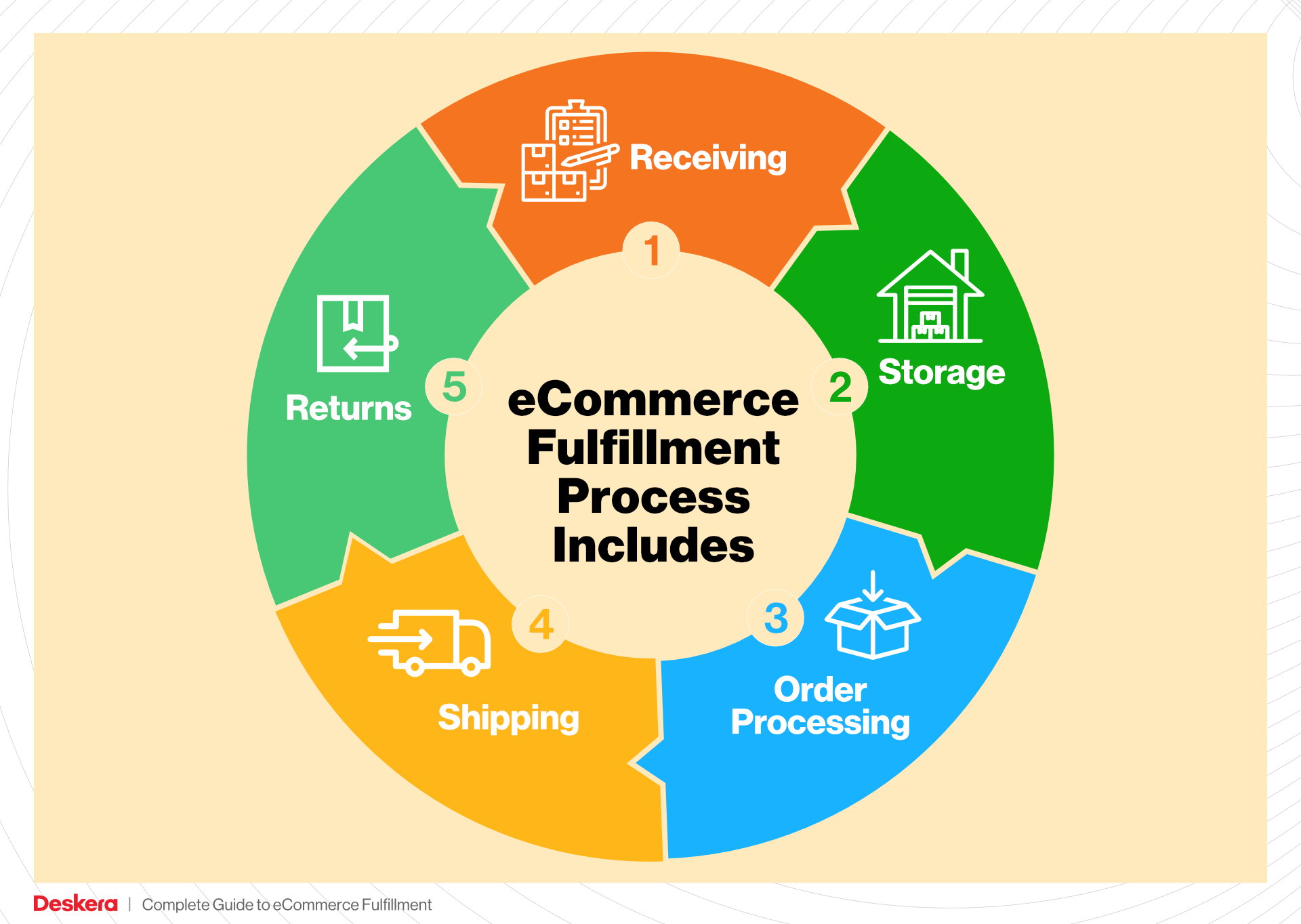
3. Order Picking
Order picking is the process of retrieving products from their storage locations to fulfill customer orders. This step is pivotal in the order fulfillment process, as it directly impacts delivery speed and accuracy. Once an order is placed, a pick list is generated, detailing the items and their respective locations within the warehouse.
Efficient order picking strategies can include batch picking, where multiple orders are picked simultaneously, or zone picking, where pickers are assigned specific areas of the warehouse. Utilizing technology, such as handheld scanners or automated picking systems, can enhance accuracy and speed during this process.
Accurate order picking is essential for maintaining customer satisfaction. Errors at this stage can lead to incorrect shipments, resulting in returns, increased operational costs, and diminished customer trust. Therefore, investing in training and technology for order pickers is crucial for ensuring accuracy and efficiency.
4. Order Packing
Once items are picked, they move to the packing stage, where they are prepared for shipment. This process involves placing items into appropriate packaging, ensuring they are protected during transit. The packing area is equipped with various materials, such as boxes, cushioning, and tape, to secure the products effectively.
In this step, it is important to consider the shipping method and destination to determine the most suitable packaging. Additionally, packing slips and shipping labels are generated and attached to each package, providing essential information for both the customer and the carrier.
Efficient packing is vital for minimizing shipping costs and reducing the likelihood of damage during transport. It also enhances the unboxing experience for customers, which can foster loyalty and encourage repeat purchases. Adopting packing technology, such as automated packing machines, can further improve efficiency and accuracy in this stage.
5. Shipping & Delivery
The final step in the order fulfillment process is shipping and delivery. Once orders are packed, they are handed over to shipping carriers for transportation to the customer’s address. This phase requires careful coordination with various carriers to ensure timely and cost-effective delivery options.
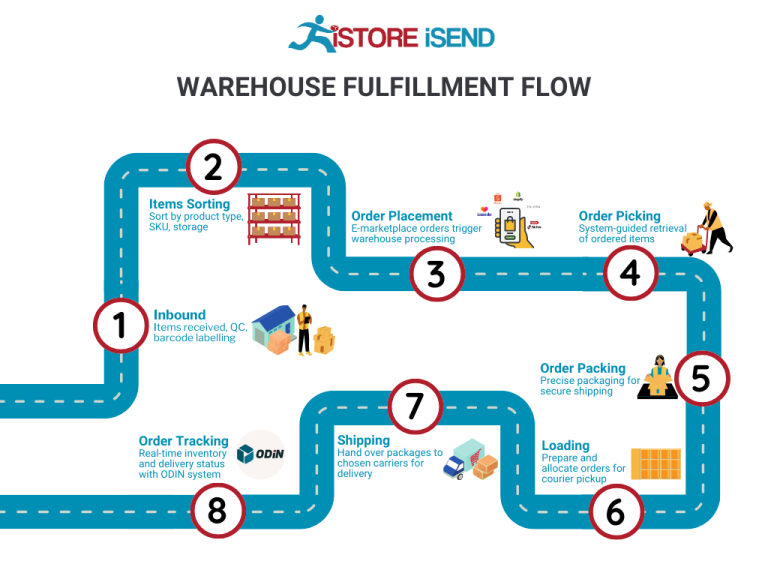
Tracking systems play a significant role in this stage, allowing both the business and the customer to monitor the shipment’s progress. Providing tracking information enhances transparency and improves the customer experience by keeping them informed about their order status.
Efficient shipping and delivery are critical for maintaining customer satisfaction and loyalty. Delays or issues at this stage can lead to negative experiences, potentially harming the business’s reputation. Therefore, businesses should continually assess their shipping partnerships and logistics strategies to ensure they can meet customer expectations for speed and reliability.
By optimizing each step of the order fulfillment process, e-commerce businesses can enhance their operational efficiency, reduce costs, and ultimately improve customer satisfaction, which is essential for scaling in today’s competitive market.
Comparing Fulfillment Models: In-House vs. 3PL vs. Dropshipping
Fulfillment Models Overview
When scaling an e-commerce business, choosing the right fulfillment model is crucial for operational efficiency and customer satisfaction. Each model offers distinct advantages and disadvantages, impacting how businesses manage inventory, shipping, and overall logistics. Below is a comparison of three popular fulfillment models: In-House Fulfillment, Third-Party Logistics (3PL), and Dropshipping.
| Model | Who Handles Inventory | Best For (Business Stage) | Key Advantage | Key Disadvantage |
|---|---|---|---|---|
| In-House Fulfillment | Business itself | Established businesses | Greater control over inventory and operations | High overhead costs and complexity |
| Third-Party Logistics (3PL) | 3PL provider | Growing businesses | Scalability and reduced operational burden | Less control over inventory and fulfillment speed |
| Dropshipping | Supplier | Startups or low-budget firms | Low initial investment and risk | Lower profit margins and dependency on suppliers |
In-House Fulfillment
In-house fulfillment means that a business manages its own inventory and shipping processes. This model is typically adopted by established businesses that have the resources and infrastructure to handle logistics internally. Companies using in-house fulfillment benefit from greater control over their operations, including inventory management, order processing, and customer service. This control allows for personalized branding experiences and potentially faster shipping times, which can enhance customer satisfaction.
However, in-house fulfillment comes with significant challenges. Maintaining a warehouse, hiring staff, and managing logistics can lead to high overhead costs. Moreover, as businesses grow, scaling operations can become complex and resource-intensive. Companies must also invest in technology and systems to manage inventory effectively. For businesses looking to maintain a competitive edge while keeping operational costs manageable, in-house fulfillment may not always be the best long-term solution.
Third-Party Logistics (3PL)
Third-party logistics (3PL) providers offer comprehensive logistics services, including warehousing, inventory management, order fulfillment, and shipping. This model is ideal for growing businesses that need to scale quickly without the burden of managing their own logistics. 3PL providers have the expertise and infrastructure to streamline operations, allowing businesses to focus on core activities such as marketing and product development.
One of the key advantages of partnering with a 3PL is the ability to scale operations efficiently. As order volumes increase, 3PLs can adjust their services accordingly, providing flexibility that in-house fulfillment may lack. Additionally, 3PLs often have established shipping relationships that can lead to lower shipping costs and faster delivery times.
However, relying on a 3PL also means giving up some control over inventory and fulfillment processes. Businesses may face challenges with communication and alignment on customer service standards, which can affect the overall customer experience. Moreover, it’s crucial to select a reputable 3PL partner, as poor performance can lead to delays and dissatisfaction among customers.
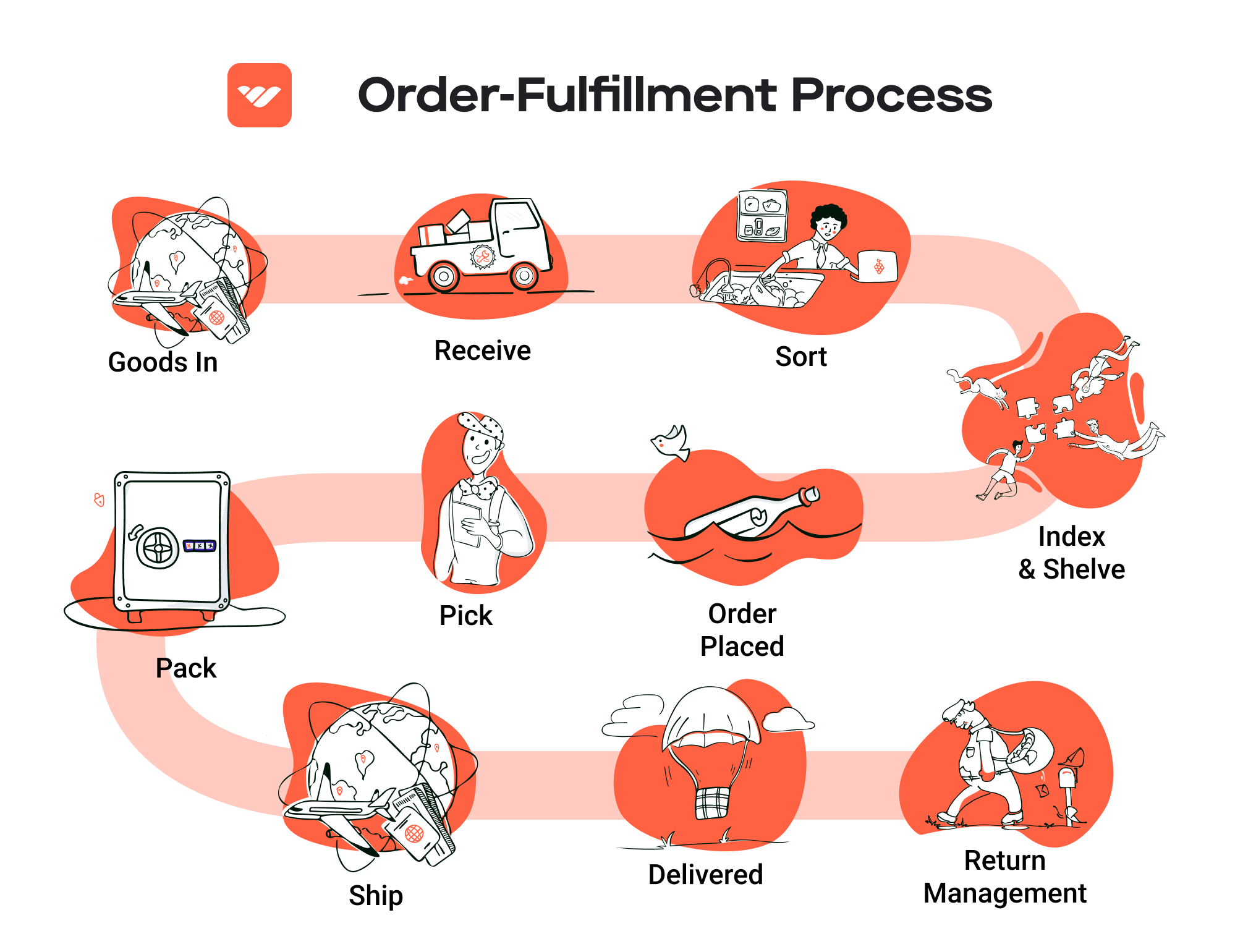
Dropshipping
Dropshipping is a fulfillment model where a business sells products it does not keep in stock. Instead, when a customer places an order, the business purchases the item from a third-party supplier who then ships it directly to the customer. This model is particularly attractive to startups and entrepreneurs with limited resources, as it requires minimal upfront investment in inventory.
The primary advantage of dropshipping is the low financial risk involved. Since businesses only pay for products after they have made a sale, there is no need to invest heavily in inventory upfront. This model also allows for a wide product range without the need for physical storage space. Additionally, it enables entrepreneurs to test new products and markets with little financial commitment.
However, dropshipping comes with its own set of challenges. Profit margins can be lower compared to other fulfillment models, as suppliers often charge higher prices for the convenience of dropshipping. Moreover, businesses are dependent on their suppliers for product quality, inventory availability, and shipping times. Poor supplier performance can lead to customer dissatisfaction, which can harm the business’s reputation. Furthermore, managing customer service can be complicated, as issues may arise that are beyond the business’s control.
Conclusion
Choosing the right fulfillment model is critical for e-commerce businesses looking to scale effectively. In-house fulfillment offers control but comes with high overhead costs. 3PLs provide scalability and efficiency, making them suitable for growing businesses. Dropshipping presents a low-risk entry point for startups but can lead to lower profit margins and dependency on suppliers. Each model has its unique characteristics, and businesses must evaluate their specific needs, resources, and growth strategies to determine the most suitable fulfillment approach.
A Deep Dive into Amazon FBA: Pros, Cons, and Who It’s For
Understanding Fulfillment by Amazon (FBA)
Fulfillment by Amazon (FBA) is a service provided by Amazon that allows sellers to store their products in Amazon’s fulfillment centers. Amazon takes care of storage, packaging, and shipping, as well as customer service and returns for those products. This service is particularly appealing to e-commerce business owners looking to scale their operations while leveraging Amazon’s extensive logistics network and customer trust.
How FBA Works
-
Product Storage: Sellers send their products to Amazon’s fulfillment centers. The products are then stored until they are sold.
-
Order Fulfillment: When a customer places an order for a product, Amazon picks, packs, and ships the item directly to the customer. This process is automated and streamlined to ensure quick delivery.
-
Customer Service: Amazon handles all customer inquiries and returns related to FBA products, allowing sellers to focus on other aspects of their business.
-
Multi-Channel Fulfillment: Sellers can use FBA to fulfill orders from other sales channels, such as their own websites or other marketplaces, while still benefiting from Amazon’s logistics.
-
Prime Eligibility: Products fulfilled through FBA are eligible for Amazon Prime, which can significantly enhance visibility and sales potential.
Pros of Using FBA
-
Prime Eligibility: One of the most significant advantages of FBA is that it automatically qualifies your products for Amazon Prime, granting access to millions of Prime members. This can lead to increased visibility and higher conversion rates.
-
Customer Trust: Amazon is a household name with established trust among consumers. By using FBA, sellers can leverage Amazon’s reputation, which can lead to more sales, especially for new or lesser-known brands.
-
Multi-Channel Fulfillment: FBA is not limited to Amazon sales. Sellers can fulfill orders from their own websites or other platforms, centralizing their logistics through Amazon’s fulfillment network. This flexibility can simplify operations and improve efficiency.
-
Scalability: FBA allows businesses to scale quickly without the need to invest heavily in warehousing and logistics infrastructure. As order volumes increase, Amazon’s systems can handle the growth seamlessly.
-
Time Savings: With Amazon handling storage, shipping, and customer service, sellers can save significant time and focus on product development, marketing, and other critical business functions.
Cons of Using FBA
-
High Fees: FBA comes with various fees, including storage fees and fulfillment fees, which can add up quickly. These costs can eat into profit margins, especially for sellers with low-priced items or slow-moving inventory.
-
Strict Inventory Rules: Amazon has strict guidelines regarding inventory management. Sellers must ensure they maintain optimal stock levels to avoid long-term storage fees and potential removal of unsold inventory.
-
Commingling Risks: When using FBA, inventory from different sellers may be stored together, leading to potential issues with counterfeit products or misdelivered items. This commingling can be a concern for brand owners looking to maintain quality control.
-
Limited Control Over Fulfillment: Once products are sent to Amazon’s warehouses, sellers have limited control over the fulfillment process. This can be challenging for businesses that want to ensure a specific level of service or customization in packaging.
-
Dependency on Amazon: Relying heavily on FBA means your business is closely tied to Amazon’s policies and changes. Any alterations in Amazon’s terms of service can significantly impact your operations.
Who is FBA Best For?
Fulfillment by Amazon is particularly well-suited for:
-
Small to Medium-Sized Businesses: Companies that may not have the resources to invest in their own warehousing and logistics can benefit significantly from FBA’s infrastructure.
-
E-commerce Entrepreneurs: Startups looking to quickly launch their products and gain market traction can leverage FBA to enhance their visibility and sales potential without heavy upfront investment.
-
Brands Seeking Growth: Established brands looking to expand their reach and tap into Amazon’s vast customer base can utilize FBA to streamline operations and enhance customer experience.
-
Sellers with Diverse Product Lines: Businesses with a wide range of products can benefit from FBA’s multi-channel fulfillment capabilities, allowing them to manage logistics more efficiently across various sales platforms.
In conclusion, Fulfillment by Amazon can be a powerful tool for e-commerce business owners looking to scale their operations. By understanding the pros and cons of FBA, businesses can make informed decisions about whether this service aligns with their goals and operational strategies.
Core Services Offered by Fulfillment Centers
Inventory Management & Warehousing
Inventory management and warehousing are fundamental services provided by fulfillment centers, crucial for maintaining the flow of goods in e-commerce operations. These centers offer a secure and organized space for storing products until they are needed for shipment.
Effective inventory management involves tracking stock levels, managing reorders, and forecasting demand. Fulfillment centers utilize sophisticated inventory management systems that provide real-time data on stock levels, allowing businesses to avoid stockouts or overstock situations. This service not only ensures that e-commerce businesses have the right products available when needed but also optimizes storage space, reducing costs associated with excess inventory.
For e-commerce business owners, the benefit of using fulfillment centers for inventory management is twofold: it reduces the burden of logistics and enables better decision-making through data-driven insights. By outsourcing warehousing, businesses can focus on core competencies such as marketing and product development, while also benefiting from the expertise of fulfillment providers in managing inventory efficiently.
Pick and Pack Services
Pick and pack services are essential to the fulfillment process, allowing e-commerce businesses to efficiently prepare orders for shipment. This service involves the selection (picking) of items from inventory based on customer orders, followed by packaging (packing) those items securely for delivery.
Fulfillment centers employ advanced picking technologies, such as barcode scanning and automated picking systems, to streamline this process. The accuracy and speed of these services significantly enhance the overall customer experience, reducing the likelihood of shipping errors and ensuring timely deliveries.
For e-commerce businesses, utilizing pick and pack services means quicker turnaround times for order fulfillment, leading to improved customer satisfaction. Additionally, by outsourcing this function, businesses can scale operations without the need to invest in additional labor or infrastructure, making it a cost-effective solution for growth.
Kitting and Assembly
Kitting and assembly services offered by fulfillment centers allow e-commerce businesses to bundle products together or assemble items before shipment. Kitting involves grouping multiple products into a single package, while assembly refers to putting together components to create a finished product.
This service is particularly beneficial for businesses that offer gift sets, promotional bundles, or complex products that require assembly. Fulfillment centers can handle the logistics of kitting and assembly, ensuring that products are packaged attractively and correctly, which can enhance the perceived value of the offering.
For entrepreneurs and operations managers, kitting and assembly services provide a competitive advantage by enabling unique product offerings and reducing the time to market. By leveraging these services, businesses can focus on their marketing strategies and customer engagement rather than the intricacies of product preparation, ultimately driving sales and increasing profitability.
Returns Management (Reverse Logistics)
Returns management, or reverse logistics, is a critical service provided by fulfillment centers that deals with handling product returns and exchanges. This process involves receiving returned items, inspecting them, restocking them if they are in sellable condition, or managing their disposal if they are not.
Effective returns management is vital for e-commerce businesses, as it directly impacts customer satisfaction and loyalty. A streamlined returns process can enhance the customer experience by making it easy for customers to return items and receive refunds or exchanges, which can encourage repeat purchases.
Fulfillment centers often implement efficient systems for tracking returns and managing inventory, ensuring that businesses can quickly respond to customer inquiries and restock items promptly. For e-commerce businesses, outsourcing returns management can reduce operational complexities and costs associated with handling returns in-house. This allows businesses to maintain a positive brand reputation while focusing on growth and customer engagement.
Conclusion
In summary, fulfillment centers offer a range of core services that are essential for scaling e-commerce operations. From inventory management and warehousing to pick and pack services, kitting and assembly, and returns management, these services provide significant benefits that can enhance efficiency, reduce costs, and improve customer satisfaction. By partnering with a fulfillment center, e-commerce business owners and operations managers can focus on strategic growth initiatives while leaving the logistics to the experts.
How to Choose a Fulfillment Partner: A 6-Point Checklist
Location & Warehouse Network
Choosing a fulfillment partner with strategically located warehouses can significantly affect your shipping speed and costs. A partner with warehouses close to your customer base will enable quicker delivery times and potentially lower shipping fees.
Questions to Ask:
– Where are your warehouses located, and how do they align with my customer demographics?
– Do you have a network of distribution centers that can cover key regions effectively?
– How do you handle logistics for areas that may not be in proximity to your warehouses?
Technology & Integrations
In today’s digital landscape, the ability to integrate seamlessly with your existing e-commerce platforms is crucial. A fulfillment partner should offer robust technology solutions that provide real-time inventory tracking, order management, and analytics.
Questions to Ask:
– What technology platforms do you use for inventory and order management?
– Can your systems integrate with my e-commerce platform (e.g., Shopify, Amazon, WooCommerce)?
– Do you offer any analytics or reporting tools that can help me track my fulfillment performance?
Specializations (e.g., Cold Storage, Oversized Items)
Depending on your product line, you may require specialized services. For example, businesses dealing with perishable goods need partners that offer cold storage, while those with oversized items may need specific handling capabilities.
Questions to Ask:
– Do you have the capability to handle specialized inventory, such as cold storage or fragile items?
– How do you ensure compliance with regulations for products that require special handling?
– Can you accommodate the unique packaging or shipping requirements for my product types?
Scalability & Capacity
As your business grows, so will your fulfillment needs. It’s essential to partner with a 3PL that can scale operations efficiently to match your growth trajectory without compromising service quality.
Questions to Ask:
– What is your capacity for handling increased order volumes during peak seasons?
– How do you manage fluctuations in demand, and what strategies do you have in place to adapt?
– Can you provide examples of how you’ve successfully scaled operations for other clients?
Pricing and Contracts
Understanding the pricing structure and contract terms of your fulfillment partner is crucial for maintaining profitability. Look for transparency in pricing and clarity in contract terms to avoid unexpected costs.
Questions to Ask:
– Can you provide a detailed breakdown of your pricing model (e.g., storage fees, pick-and-pack fees, shipping rates)?
– Are there any hidden fees I should be aware of?
– What are the terms for contract length, termination, and service level agreements?
Customer Support & Reviews
Reliable customer support can make a significant difference in your fulfillment experience. Additionally, reviewing testimonials and case studies from other clients can provide insights into the partner’s reliability and service quality.
Questions to Ask:
– What level of customer support do you provide (e.g., 24/7 support, dedicated account manager)?
– Can you share references or case studies from clients in my industry?
– How do you handle issues or disputes that may arise during the fulfillment process?
Conclusion
Selecting the right fulfillment partner is a critical decision that can directly impact your business operations and customer satisfaction. By utilizing this checklist, you can ensure that your chosen partner aligns with your business goals and can support your growth effectively. Prioritize these factors based on your unique business needs and do not hesitate to ask tough questions to clarify any uncertainties. A well-informed decision today can lead to smoother operations and enhanced customer experiences tomorrow.
Understanding Fulfillment Pricing: A Breakdown of Common Fees
Initial Setup Fees
Initial setup fees are one-time charges that cover the costs associated with establishing your account with a fulfillment provider. This fee typically includes the onboarding process, which involves setting up your inventory management system, integrating your e-commerce platform, and configuring your shipping preferences. The amount can vary based on the complexity of your operations and the provider’s pricing structure.
To calculate initial setup fees, providers may assess your business needs, including the number of products you plan to store, the level of customization required for your system, and the integration of any existing software. Generally, businesses can expect to pay anywhere from a few hundred to several thousand dollars. It’s important to clarify what is included in this fee, as some providers may charge separately for specific services like training or technical support.
Receiving Fees
Receiving fees are charged when your products arrive at the fulfillment center. This fee covers the cost of unloading, inspecting, and storing your goods. Receiving fees can be calculated per shipment or based on the number of items received. For instance, if you send a pallet of goods, the fee may be determined by the total number of pallets received or the total weight of the shipment.
To optimize these costs, it’s advisable to consolidate shipments where possible. This can help reduce the frequency of receiving fees and enhance efficiency at the fulfillment center. Additionally, ensure that your products are properly labeled and packaged to avoid any delays or additional charges during the receiving process.
Storage Fees (per pallet/bin)
Storage fees are ongoing charges for the space your inventory occupies within the fulfillment center. Providers typically charge these fees on a monthly basis, either per pallet or per bin. The exact rate can depend on several factors, including the size of the items, the total inventory volume, and the duration of storage.
For example, a provider may charge a monthly fee of $10 per pallet, which would mean that if you have 10 pallets stored, your monthly storage fee would be $100. To minimize storage costs, it’s essential to regularly assess your inventory levels and adjust your stock accordingly. Implementing an effective inventory management strategy can help reduce excess stock and associated storage fees.
Pick & Pack Fees (per item/order)
Pick and pack fees are charged for the labor involved in selecting items from storage and packing them for shipment. This fee can be calculated per item or per order, depending on the fulfillment provider. For instance, a provider may charge $1 per item picked and packed, meaning that if an order contains five items, the fee would total $5.
Understanding the pick and pack process is crucial for budgeting these fees effectively. Some fulfillment centers offer tiered pricing, where the per-item fee decreases as order volumes increase. To maximize savings, consider negotiating for bulk pricing or establishing a minimum order volume that fits your business’s typical sales patterns.
Shipping Fees
Shipping fees cover the cost of transporting your products from the fulfillment center to your customers. These fees can vary significantly based on factors such as the shipping method (standard, expedited, etc.), the destination, package dimensions, and weight. Providers often offer discounted shipping rates due to their volume of shipments, which can help lower your overall costs.
Shipping fees are typically calculated based on the carrier’s rates, and some fulfillment centers provide integrated shipping solutions that allow you to compare different carriers’ rates directly. To manage shipping costs effectively, evaluate the different shipping options available and consider using flat-rate shipping for certain products to simplify budgeting.
Conclusion: Tips for Getting an Accurate Quote
When seeking an accurate quote from a fulfillment provider, consider the following tips:
-
Be Specific: Clearly outline your business needs, including the types of products you sell, expected order volumes, and any special handling requirements. The more detailed your information, the more accurate the quote will be.
-
Ask About Additional Fees: Inquire about any hidden fees that may not be included in the initial quote, such as returns processing, inventory audits, or seasonal surcharges.
-
Compare Providers: Don’t settle for the first quote you receive. Compare multiple fulfillment providers to understand the market rates and find the best fit for your business.
-
Negotiate Terms: Many fulfillment centers are open to negotiation, especially if you can provide them with potential order volumes. Don’t hesitate to ask for reduced fees based on expected growth.
-
Review Contracts Carefully: Before committing, ensure you thoroughly review the terms of service and pricing structure outlined in the contract. Look for clauses that might affect your costs in the future, such as price increases or minimum order requirements.
By understanding these common fulfillment pricing models and following these tips, e-commerce business owners can make informed decisions that contribute to efficient logistics and cost-effective operations.
Frequently Asked Questions (FAQs) about Fulfillment
1. What is an Amazon Fulfillment Center?
An Amazon Fulfillment Center is a large-scale warehouse facility where Amazon stores, processes, and ships products to customers. These centers are crucial in ensuring efficient logistics and timely delivery of orders, playing a vital role in Amazon’s extensive supply chain network.
2. Where is the Amazon Fulfillment Center located in Las Vegas?
The Amazon Fulfillment Center in Las Vegas is located at N Sloan Ln, Las Vegas, NV 89115. Additionally, there is another facility at 3650 E Post Rd, Las Vegas, NV 89120. Both centers are designed to handle a wide range of products and support Amazon’s commitment to fast delivery.
3. What types of products are processed at the Las Vegas Fulfillment Centers?
The Las Vegas Fulfillment Centers handle a diverse array of products, ranging from electronics and clothing to household goods and more. This versatility allows Amazon to cater to a broad customer base and meet various market demands.
4. How do Amazon Fulfillment Centers improve delivery times?
Amazon Fulfillment Centers utilize advanced technology and efficient logistics processes, including automated systems and a dedicated workforce, to streamline the picking, packing, and shipping of orders. This operational efficiency significantly reduces processing times and enhances delivery speed.
5. What is the difference between a warehouse and a fulfillment center?
A warehouse primarily serves as a storage facility for goods, focusing on inventory management and long-term storage. In contrast, a fulfillment center is designed for the end-to-end process of order processing, including receiving, storing, picking, packing, and shipping products directly to customers. Fulfillment centers prioritize speed and efficiency to facilitate online sales.
6. What is a 3PL (Third-Party Logistics)?
A 3PL, or Third-Party Logistics provider, is a company that offers logistics services to businesses, including warehousing, fulfillment, and transportation. By partnering with a 3PL, e-commerce businesses can outsource their logistics operations, allowing them to focus on core activities like marketing and product development while benefiting from the expertise and infrastructure of the 3PL.
7. How much do fulfillment services cost?
The cost of fulfillment services can vary widely based on several factors, including the volume of orders, the types of products, storage requirements, and the specific services provided (e.g., packing, shipping, returns management). Generally, costs can range from a few dollars per order to more substantial fees for specialized services. It is advisable to request quotes from multiple fulfillment providers to find a solution that fits your budget and needs.
8. Can I tour an Amazon Fulfillment Center in Las Vegas?
Yes, Amazon occasionally offers tours of its fulfillment centers, including those in Las Vegas. These tours provide insights into the operations and technologies used in the fulfillment process. However, availability may vary, so it’s best to check directly with Amazon or visit their official website for scheduling information.
9. How does Amazon ensure accuracy in order fulfillment?
Amazon employs a combination of advanced technology, such as barcode scanning and automated inventory management systems, alongside rigorous training and quality control measures for employees. These practices help minimize errors in order picking and ensure that customers receive the correct products in a timely manner.
10. What are the benefits of using Amazon Fulfillment Centers for my e-commerce business?
Utilizing Amazon Fulfillment Centers can provide several advantages for e-commerce businesses, including:
- Faster Delivery: Access to Amazon’s vast logistics network enhances delivery speed.
- Scalability: Easily scale operations without the need for significant investment in warehousing and logistics infrastructure.
- Customer Trust: Leveraging Amazon’s reputation can increase customer confidence and potentially boost sales.
- Focus on Core Activities: Outsourcing fulfillment allows business owners to concentrate on marketing, product development, and customer service.
By understanding these aspects of Amazon Fulfillment Centers, e-commerce business owners can make informed decisions about their logistics strategies and enhance their overall operations.
Conclusion: Is Outsourcing Fulfillment the Right Move for Your Business?
Evaluating the Benefits of Outsourcing Fulfillment
Outsourcing fulfillment can be a strategic move for e-commerce businesses looking to streamline operations and enhance customer satisfaction. One of the primary benefits is time savings; by leveraging a fulfillment service, businesses can offload the complexities of inventory management, packing, and shipping. This allows owners and managers to focus on core competencies such as marketing and product development, ultimately driving growth.
Scalability is another significant advantage. As your business expands, so do your logistical needs. A fulfillment partner can provide the necessary infrastructure to handle increased order volume without the need for substantial investment in warehousing or staff. This flexibility is particularly crucial during peak seasons or promotional events, where demand can fluctuate dramatically.
Moreover, fulfillment services come with expertise in logistics and supply chain management. These partners often have established processes and technology that enhance efficiency and accuracy in order processing. They are equipped to handle various product types, ensuring that your goods are stored, packed, and shipped under optimal conditions. This level of professionalism can significantly improve your service delivery and customer satisfaction.
However, the importance of selecting the right fulfillment partner cannot be overstated. A partner aligned with your business goals and values will be vital for sustained growth. Conducting a thorough audit of your current shipping processes can help identify gaps and inefficiencies, paving the way for a more effective fulfillment strategy.
Take Action
Now is the time to assess whether outsourcing fulfillment is the right next step for your business. Evaluate your current logistics capabilities and consider how a dedicated fulfillment partner could enhance your operations. By making informed decisions today, you can position your business for greater efficiency and success in the competitive e-commerce landscape.
Important Disclaimer
⚠️ Important Disclaimer
The information in this guide is for educational purposes. Fulfillment services, pricing, and platform features change frequently. Always conduct your own due diligence and consult with providers directly before making business decisions.
